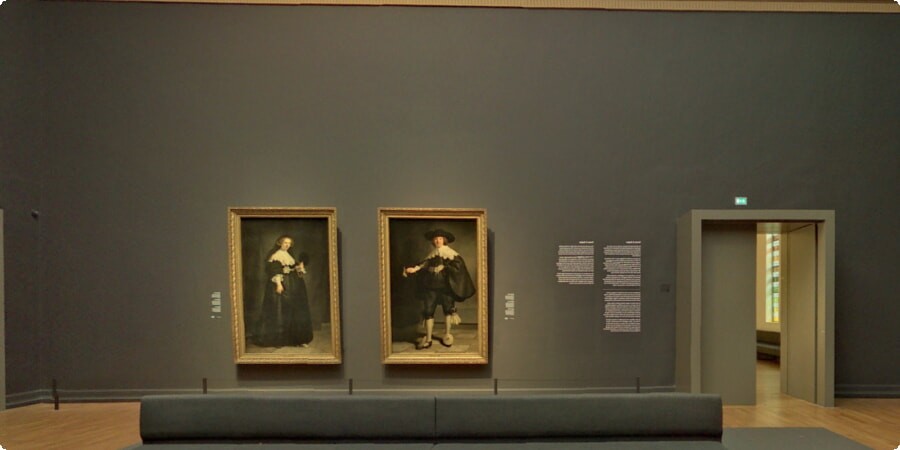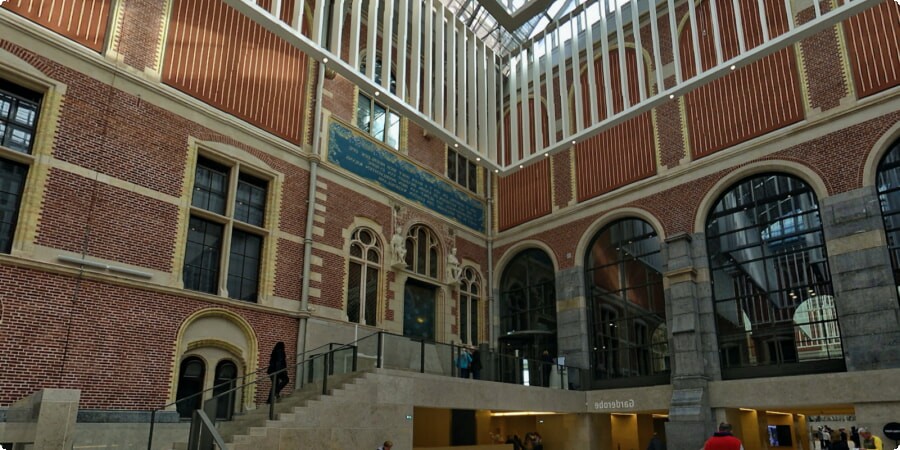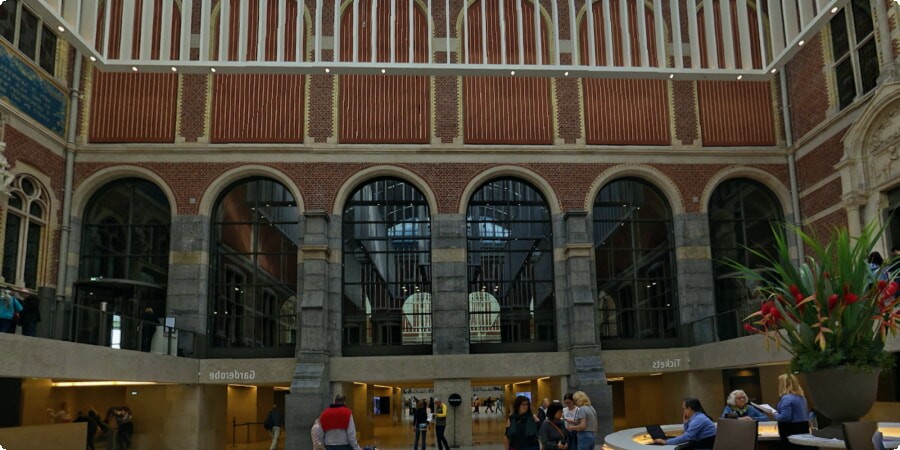Welcome to Rijksmuseum, a cultural gem nestled in the heart of Amsterdam, known worldwide for its extensive collection that celebrates the Dutch Golden Age. This period, spanning the 17th century, marked a pinnacle of Dutch art, trade, and cultural flourishing, leaving an indelible mark on European history. Rijksmuseum stands as a testament to this era, preserving and showcasing masterpieces that reflect the creativity, innovation, and prosperity of the Dutch Republic during its Golden Age.
The museum itself is not just a repository of art but a journey through time, offering visitors a glimpse into the rich tapestry of Dutch life, values, and achievements through centuries-old artworks and historical artifacts. Whether you're a seasoned art enthusiast or a curious traveler, Rijksmuseum promises an enriching experience that transcends mere admiration of paintings, inviting you to delve deeper into the essence of Dutch cultural heritage.
History and Architecture of Rijksmuseum
Rijksmuseum's history intertwines with the evolution of Amsterdam as a global hub of commerce and culture. Established in 1800, initially as the "National Art Gallery," it aimed to house the burgeoning collections of Dutch art and historical artifacts. The museum's current building, a stunning example of Dutch Renaissance architecture, was designed by Pierre Cuypers and opened in 1885. Its grandeur reflects the aspirations of a nation eager to showcase its cultural legacy to the world.
The architecture itself is a work of art, with intricate details, soaring arches, and a central atrium that echoes with the footsteps of millions of visitors each year. Cuypers's vision was not only to create a space for art appreciation but also to instill a sense of national pride and identity, blending historical motifs with contemporary functionality. Over the years, Rijksmuseum has undergone meticulous renovations to preserve its architectural integrity while modernizing facilities to meet the needs of modern-day patrons.
To explore Rijksmuseum's architectural splendor firsthand, take a virtual stroll via Google Maps.

The Night Watch by Rembrandt
Central to Rijksmuseum's collection is Rembrandt van Rijn's magnum opus, "The Night Watch" (1642). This monumental painting, also known as "Militia Company of District II under the Command of Captain Frans Banninck Cocq," stands as a testament to Rembrandt's mastery of light, shadow, and human emotion.
"The Night Watch" is not merely a depiction of a civic guard group but a narrative imbued with symbolism and dynamism. Rembrandt's use of chiaroscuro technique creates a sense of drama, drawing viewers into the action unfolding before them. Each figure, illuminated by a play of light and shadow, contributes to the composition's depth and storytelling.
For a deeper insight into "The Night Watch" and its significance, explore its Wikipedia page.
Planning Your Visit: Tips and Recommendations
Exploring Rijksmuseum and the wonders of Amsterdam's cultural scene often calls for flexibility and convenience in transportation. Renting a car can provide the freedom to explore beyond the museum walls, from picturesque canal views to hidden gems in the city's neighborhoods.
For a seamless travel experience in Amsterdam, consider booking your car rental in advance through this link. This ensures you have the right vehicle waiting for you to continue your journey through the art-filled streets of Amsterdam and beyond.

Vermeer and His Timeless Works
Johannes Vermeer, renowned for his mastery of light and intimate domestic scenes, is prominently featured in Rijksmuseum's collection. Works such as "The Milkmaid" and "The Girl with a Pearl Earring" exemplify Vermeer's ability to capture everyday life with an ethereal quality. Each brushstroke reveals intricate details and a profound understanding of human emotion, making Vermeer's paintings enduring symbols of Dutch artistry during the Golden Age.
Explore more about Johannes Vermeer and his artworks on his Wikipedia page.
Other Key Artists of the Dutch Golden Age
Beyond Rembrandt and Vermeer, Rijksmuseum houses works by other influential artists who shaped Dutch art during the Golden Age. Frans Hals, known for his lively portraits that capture the essence of his subjects, and Jan Steen, celebrated for his genre scenes depicting everyday life with humor and insight, offer unique perspectives on Dutch society of the time. Jacob van Ruisdael's landscapes, characterized by their dramatic skies and meticulous detail, provide a window into the natural beauty that inspired Dutch painters.

Rijksmuseum's Collection Beyond Paintings
While paintings dominate Rijksmuseum's galleries, its collection extends far beyond canvas and brush. Sculptures, decorative arts, and historical artifacts offer a comprehensive view of Dutch history and culture during the Golden Age. Delve into intricately crafted furniture, Delftware ceramics adorned with blue motifs, and exquisite silverware that reflects the wealth and craftsmanship of the era. Each artifact tells a story of innovation, trade, and artistic expression that defined the Dutch Republic's Golden Age.
To enhance your exploration of Dutch history and culture, consider renting a car to visit other historical sites and cities across the Netherlands. You can book your car rental conveniently through this link, ensuring you have the flexibility to discover more of the country's rich heritage beyond Amsterdam.
Visiting Rijksmuseum: Tips and Recommendations
Planning a visit to Rijksmuseum involves more than admiring its renowned artworks. Here are some tips to enhance your experience:

-
Timing: Visit early morning or late afternoon to avoid crowds and enjoy a quieter atmosphere.
-
Guided Tours: Consider joining a guided tour to gain deeper insights into the artworks and history of the museum.
-
Tickets: Purchase tickets online in advance to skip the queue and ensure entry during peak hours.
-
Interactive Exhibits: Explore interactive exhibits that bring Dutch history and art to life through multimedia presentations.
Rijksmuseum: Preserving Dutch Cultural Heritage
As a custodian of Dutch cultural heritage, Rijksmuseum plays a crucial role in preserving and promoting the nation's artistic legacy. Conservation efforts ensure that masterpieces are meticulously maintained for future generations to appreciate. The museum's educational programs engage visitors of all ages, fostering a deeper understanding and appreciation of Dutch art, history, and culture. Through exhibitions, publications, and digital initiatives, Rijksmuseum continues to evolve, keeping Dutch heritage alive and accessible to a global audience.
Exploring Amsterdam's Art Scene Beyond Rijksmuseum
While Rijksmuseum stands as a pinnacle of Dutch artistry, Amsterdam's art scene extends far beyond its walls. Visit neighboring museums such as the Van Gogh Museum to explore the works of another Dutch master or embark on a canal-side gallery tour to discover contemporary Dutch art. From avant-garde exhibitions to intimate artist studios, Amsterdam offers a diverse landscape of artistic expression that complements the historical richness of Rijksmuseum.